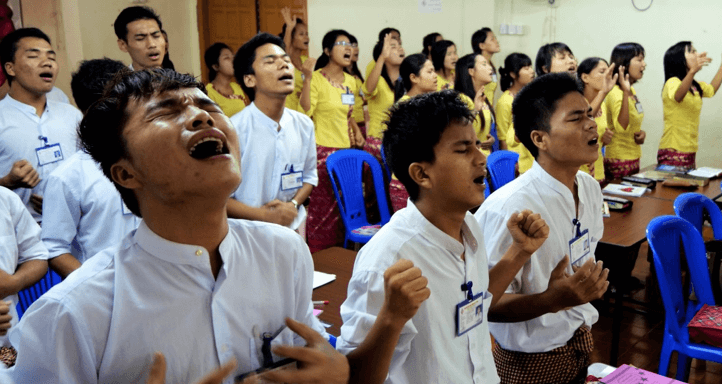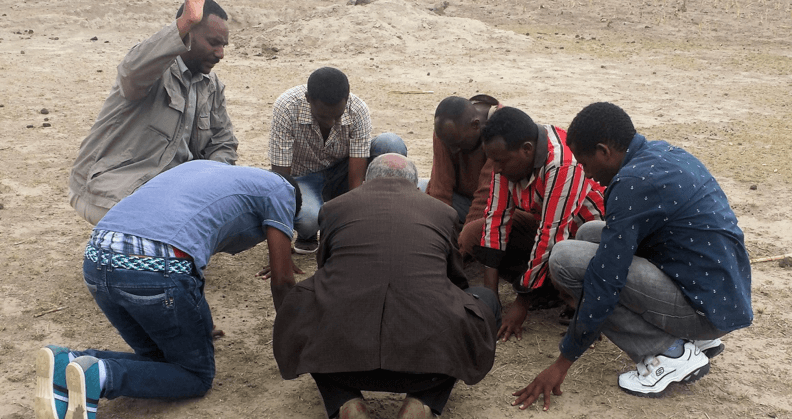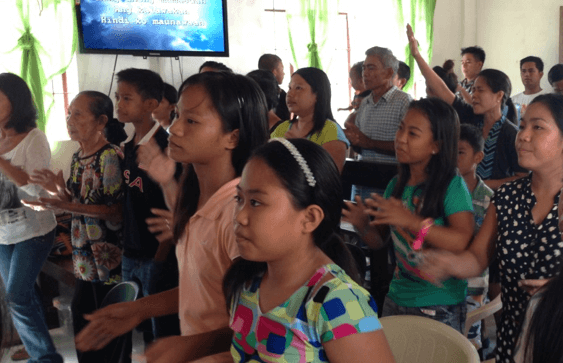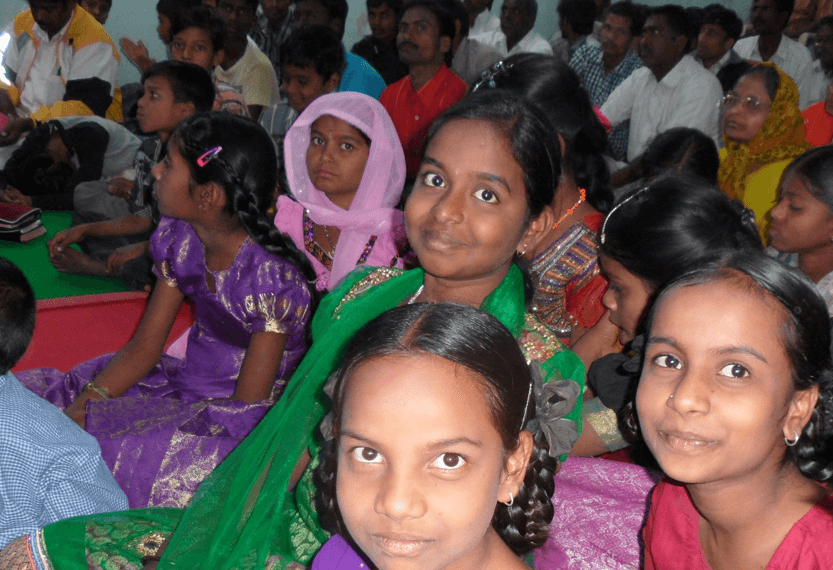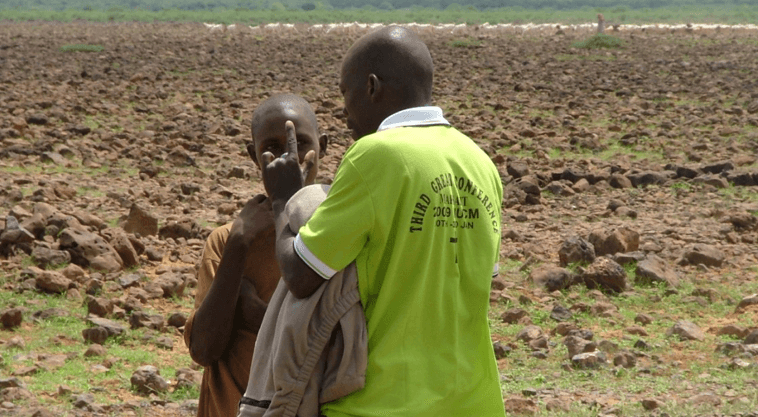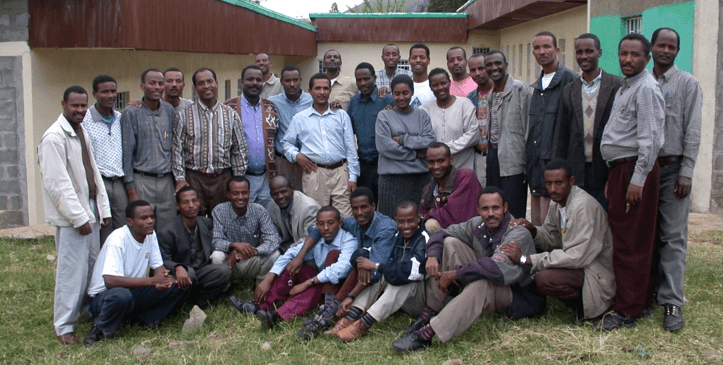How to Reach a Nation for Christ: The 7 Stages of Engagement
Bethany International sent its first missionaries to work among the unreached in the late 1940s. Seventy-two (72) years later, more than a thousand missionaries have been trained and sent and thousands of national missionaries have joined them.
Today we are helping to make disciples of Jesus Christ among 269 unreached people groups in 70 countries, and our global team of Bethany and national missionaries have adopted 239 more. It is hard work, but rewarding! These remaining places where the Church is not found are the darkest and hardest places to reach.
Through the years we have identified seven distinct stages of engagement. It is a systematic ministry cycle that begins with the adoption of an unreached people group, then the placement of missionaries, the planting of churches, and prayerfully completing with the now-reached people group being strong in the Lord and sending their own missionaries to other unreached groups
The Seven Stages of Effective Engagement come to life through transformational life stories (some names had to be changed because of the sensitive nature of the ministries that we highlight). I hope you enjoy reading about them!
Stage 1 – Adopt People Group
Prayerfully research and map unreached people groups, area by area, resulting in the ADOPTION of specific UPGs. Missionary candidates are selected, trained and readied to go.
Myanmar (Burma) is a Buddhist country of 54,773,000 people with 49 unreached people groups and some of the most inaccessible tribes in the entire region. The Burmese, with 32 million people, are the primary ethnic group with only one Christian for every 300 people. Much work remains to be done.
Missionaries into Myanmar are engaging 16 new unreached people groups in addition to the groups they are already reaching. This added commitment required much prayer, discussion, and research before the groups were finalized. Our part is helping students be trained as missionaries.
In order to engage unreached peoples, a special type of pioneer evangelist needs to be raised up – those who are able to endure hardship and are riveted in language, culture, and boldness to preach the Gospel. Graduates are sent in teams to engage UPGs as part of Engage500. New workers are beginning preparation to reach these targeted groups with the Gospel of our Lord Jesus Christ.
Stage 2 – Arrive on Site
Missionaries ARRIVE on site to begin the challenge of language and culture learning, as well as the process of developing relationships with the local people.
The process of initial engagement happens in-field after momentum builds. About a thousand workers are in training throughout Bethany partner schools at any one time, and they are being deployed in record numbers to the unreached. And yet much work remains to be done if we are to engage a total of 500 UPGs by the year 2020.
One such effort is being undertaken in Muslim areas of the country of Ethiopia. In one very practical training program, workers are trained for weeks at a time and then sent back into their own unreached Muslim people group to begin work in evangelism. This cycle repeats itself severalties over the course of two years. Once graduates are cleared to become a full-time church planter, they are given support for their pioneer ministry.
In the photo below, a team of Ethiopian church planters pray in a very resistant Muslim area before being stationed there to plant a church. Pray for workers like these who are willing to endure much hardship for the sake of the Gospel. May God give them success as the fruit of their labors!
Stage 3 – Begin Discipling
People begin to come to Christ when the UPG and the DISCIPLESHIP process begins.
New churches among unreached people groups are seldom planted quickly and easily. Most often they come into being as the result of intense efforts over a period of several years. Spiritual warfare can be quite intense in what we call “Stage 3”, where the worker begins to reach out to the surrounding communities and people begin to come to the Lord. At first it may be only a family or two who come to Christ and there might be much resistance against those who first follow the Lord in the new area. The pioneer worker’s challenge is two-fold: first, to disciple the new believers; and second, to encourage them to reach out to others so that a church can eventually be planted.
There may be a number of new believers under the discipling care of the missionary before a church is organized. And churches in a new culture might even need to look quite different from the churches the missionary is accustomed to in his own culture, especially in areas where there is a great deal of persecution.
New believers have come to Christ and are being discipled. After several lessons, they have decided to take steps to be baptized. The church will be organized once the new believers reach a point where they understand the roles and responsibilities needed to sustain church life and ministry.
Stage 4 – Establish Church
An indigenous (local) CHURCH is established.
Jesus said, “Where two or three are gathered in my name, there am I with them.” (Matthew 18:20 NIV). When can we say a church is planted in the new soil of the unreached people group? The size of the church is not the only issue. According to Matthew 18:20 Jesus will be present even in the smallest of congregations! But it is important that the new church has local leadership, is able to care for one another, including taking care of its own finances, and is able to take the Gospel to others, thus growing in both depth of faith and in numbers.
A basic definition of a church might be stated as: “people committed to Jesus, committed to each other, and committed to taking the Good News about Jesus to others. Certainly, this should be the goal of every pioneer worker, to take the Church to where it’s not.
The church photo below was planted by missionaries who cautiously nurtured the congregation, developed local leadership and helped train them in how to reach out to others around them. The church members themselves, and not the missionaries, took responsibility for the vitality of their church. They built their church building with their own hands using funds they raised for that purpose. It continues to be a thriving church today!
Stage 5 – Plant Other Churches
The indigenous church beings to PLANT other churches (demonstrating that the Gospel has taken firm root among the people).
The Church is a family. Like the human family, the Church is designed by God to reproduce. Churches that do not reproduce will eventually die.
The Church in the photo below is not the first church planted by the Indian missions organization that birthed it. It is not the 10th or even the 100th. The Bethany partner that planted this Church has a vision to plant many churches throughout the unreached villages of India. They have a desire to multiply and they relentlessly pursue their goal to plant many churches.
Recently, one of their leaders stated the goal that within the next year he wanted each of their churches to at least plant one additional church. This is the evidence of the vitality of this church movement! Once the indigenous (local) church begins to plant other churches, it’s a demonstration that the Word of God has taken deep root among the local people. This Church takes up offerings form each and every member that goes towards expanding their reach into the surrounding villages and even into far-flung areas in the country of India. It’s great having partners with such amazing vision and commitment!
Stage 6 – Multiply Churches
Church MULTIPLICATION becomes a reality as more and more churches are planted.
Church multiplication is taking place in some of the most inhospitable corners of the globe. The photo shoes a nomadic Gabbra man in Northern Kenya who heard the Gospel for the first time and joyfully accepted Christ at the end of the conversation! This simple way of sharing the Gospel with others and discipling them is the heart of this church planting movement.
In the year 2009 alone the disciple-making movement this evangelist is part of saw 400 new churches planted, many of them among nomads! These new churches need both spiritual and material strengthening. The area they’re planted in is semi0arid and the people are poor in many ways. The ministry is continually encouraging and training not only their new believers but also their church planters. Recently they have asked Bethany to also train them in specialized agricultural methods that work in semi-arid conditions like the one in the photo.
Church multiplication depends on several simple, replicable factors, such as a willingness to sacrifice, a commitment to intense prayer, to fervent evangelism, simple discipleship methods, and local leadership, often unpaid. It’s amazing to see this type of growth taking place in otherwise inhospitable environments!
Stage 7 – Send Missionaries
The gospel grows among this group to the extent that they begin to SEND their own missionaries to other unreached people groups around them.
The Gospel first came to the Ethiopian Kambata people in the 1920s, and the church grew tremendously during the Italian occupation of World War II. The Kambata are now 93% Christian and are very passionate about missions. Bethany’s affiliation with the Kambata, in fact, came through their desire to start a missionary training program, which they call the EKSM (Kale Heywet School of Missions).
This photo shows students from the first graduating class of the School of Missions. At one point more than 90% of all their graduates were either serving as missionaries to the unreached inside the country of Ethiopia, or serving in surrounding nations such as Sudan, Zambia, and even as far as Pakistan and China. Several graduates have served unto death, either by sickness or by suffering, and such is their passion to take God’s word to others.
God’s dream, and our dream, is that people from every nation, tribe, people and language will come to the Lord in great numbers, as the Kambata have, and will catch a vision for ministry to other unreached peoples!
Conclusion
It is one thing to ADOPT an unreached people group, but then the hard work of selecting, training, deploying and supporting missionaries begins.
On their part, the new missionary not only perseveres through training and saying goodbye to family, but then has to be planted into new, often very foreign soil. Then begins the challenging task of becoming comfortable with the language and culture of the engaged people group.
If all that a missionary wants to do is to become comfortable living among a new people group, then that missionary will far fall short of God’s plan for the expansion of his Kingdom. Once there, and ice functional in language and culture, the missionary embarked on the hardest task of all: convincing people of the Lordship of Jesus Christ, bringing them together with other new believers, discipling them, organizing the Church, and then growing the new church into a multiplying, missions-minded church that will reproduce and grow.
This is Engage500. It’s a goal, it’s a process, it’s a commitment. Nothing less will bring people out of darkness into the light of God’s glorious Son. To Him be all the praise and glory.
This article is from the Spring 2018 Issue of coMission Magazine.

